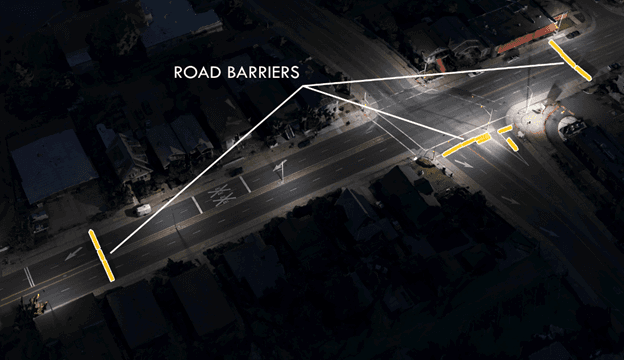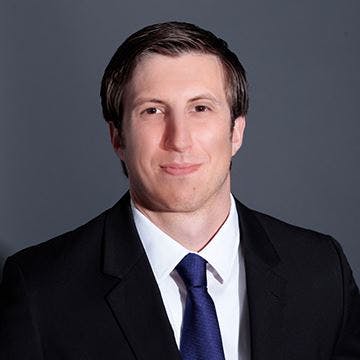
Seek and Illustrate the Truth -
Call Now 1-415-754-7772

Nighttime Visibility Reconstruction of Motorcycle Collision with Road Barrier
In preparation for a large George Floyd protest in 2020, a Bay Area city set up multiple K-rail barriers to prevent traffic from driving through the protest location. That night, Mr. DeLong, a local motorcyclist, rode along the closed-off street, ignoring traffic barriers and road closure signs, and drove around one set of K-rails before crashing into another set. Mr. DeLong suffered a broken femur along with other injuries and sued the city, claiming he was unable to see the barriers in time to stop.
The city had placed a large commercial light tower next to the barriers, and wanted to demonstrate that the barriers were very visible, so they called 3D Forensic to quantify and demonstrate the visibility of these barriers.
Challenge:
- Scientifically demonstrate the visibility of the road barriers in the context of this
Solution:
- Capture lumen measurements of surfaces relevant to visibility of the barriers
- Reconstruct the scene and conditions of the incident as well as Mr. DeLong's approaching visibility
- Scan and model environment for animated demonstration
The team prepared for a visibility reconstruction of the incident by drone scanning and laser scanning the road where the incident took place. The team then packaged the 3D scan data and consulted with the case's accident reconstructionist to confirm the path of Mr. DeLong. Mr. DeLong stated in testimony that he was travelling at about 35 miles per hour, which was higher than the posted 25 MPH speed limit.
After reviewing this data and police photos taken after the accident, the team planned a site inspection to reconstruct the lighting conditions and driver's perspective. This would entail working with the city to close the street and reconstruct the incident scene with barriers of similar shading and a like-powered tower light.
After setting up the incident site, the team took essential light measurements of the concrete road, sidewalk, and exemplar barriers to compare to the photos of the incident. Based on the measurements taken at the scene, we calculated that the luminous intensity of the original barriers was about 105 candelas. We then modified our exemplar barriers with a darkening spray, bringing the average to about 101 candelas, a conservative matching of the luminosity of the originals.
We then mounted a Sony S3 camera, calibrated to the human eye's perception of darkness, to an exemplar vehicle with a headlight brightness and throw matched to Mr. DeLong's motorcycle. The driver would advance towards the barriers along Mr. DeLong's path while recording, which would provide forensic footage of this incident's perspective reconstruction.
Our analysis from this reconstruction yielded a few important conclusions. First, we certified that the barriers were visible from about 500 feet away, a very safe distance to perceive and react to a road blockage. Then, once he was 150 feet away from the barriers, the barriers would have been completely visible for about seven seconds at his speed. If he had just perceived them at this point, he still would have been able to brake in time to avoid a critical accident.
Our analysis and visualization played a key role in settlement negotiations, and realizing the weakness of the plaintiff's argument, each side agreed to a non-disclosed settlement.
**NOTE: Each case is affected by unique factors and requires an independent forensic approach. These case studies serve as general applications and are not universally applicable. The true identities of subjects, entities, and locations have been changed to protect anonymity.**
Talk to Our Forensic Team
Let Us Help You Seek & Illustrate The Truth
By submitting this form, I confirm that I have read and understood the 3D Forensic Privacy Statement.
"We have used Jason Fries and his team twice to create medical videos depicting complex surgeries. The videos impressed both the jury and the defense attorneys. Perhaps most helpful, Jason will work on short notice and provide a persuasive product."

Robert Igleheart
Rouda, Feder, Tietjen & McGuinn
